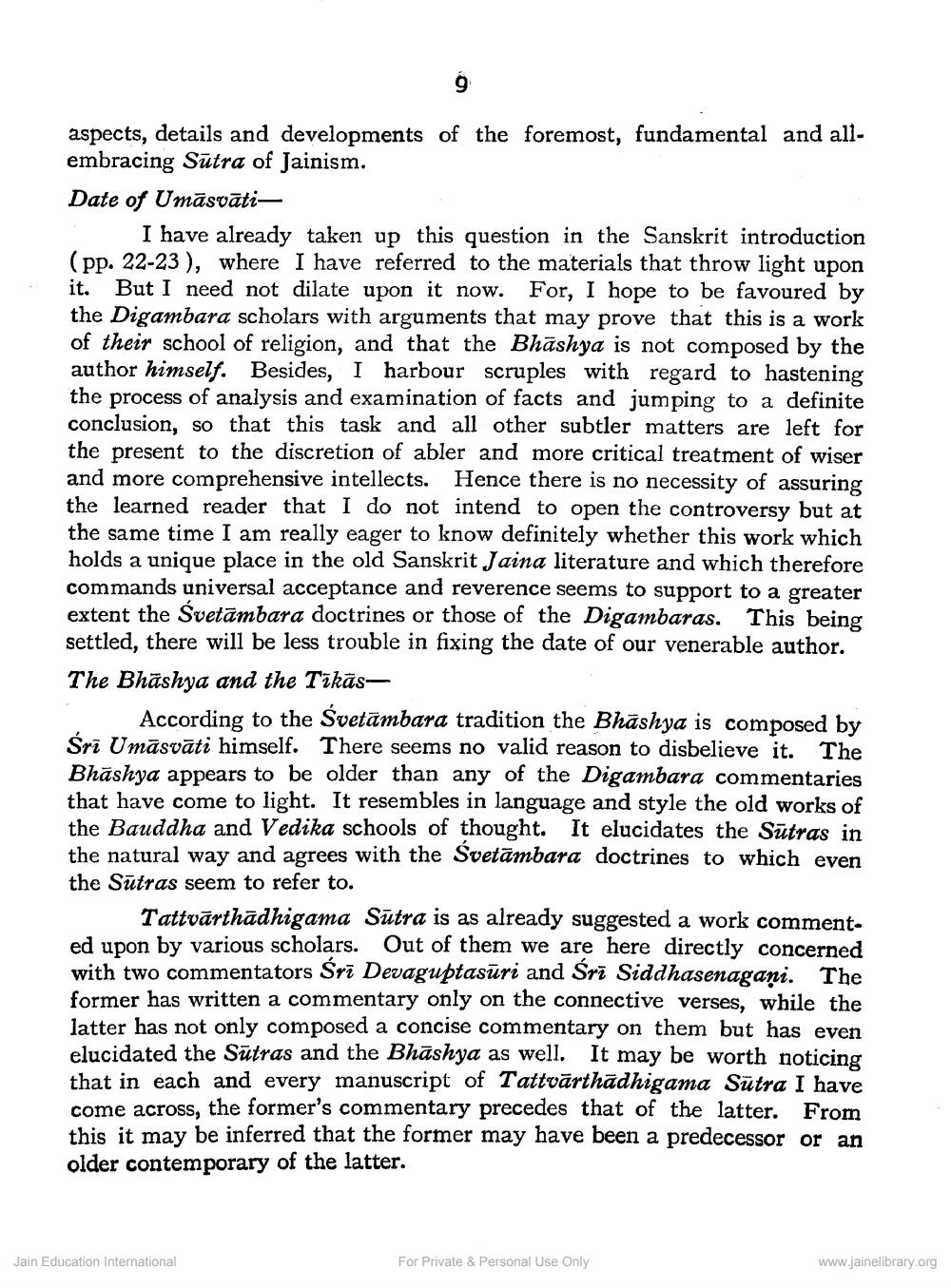________________
aspects, details and developments of the foremost, fundamental and allembracing Sūtra of Jainism. Date of Umāsvāti
I have already taken up this question in the Sanskrit introduction (pp. 22-23), where I have referred to the materials that throw light upon it. But I need not dilate upon it now. For, I hope to be favoured by the Digambara scholars with arguments that may prove that this is a work of their school of religion, and that the Bhāshya is not composed by the author himself. Besides, I harbour scruples with regard to hastening the process of analysis and examination of facts and jumping to a definite conclusion, so that this task and all other subtler matters are left for the present to the discretion of abler and more critical treatment of wiser and more comprehensive intellects. Hence there is no necessity of assuring the learned reader that I do not intend to open the controversy but at the same time I am really eager to know definitely whether this work which holds a unique place in the old Sanskrit Jaina literature and which therefore commands universal acceptance and reverence seems to support to a greater extent the Svetāmbara doctrines or those of the Digambaras. This being settled, there will be less trouble in fixing the date of our venerable author. The Bhāshya and the Tīkās
According to the Svetāmbara tradition the Bhāshya is composed by Śri Umāsvāti himself. There seems no valid reason to disbelieve it. The Bhāshya appears to be older than any of the Digambara commentaries that have come to light. It resembles in language and style the old works of
Bauddha and Vedika schools of thought. It elucidates the Sutras in the natural way and agrees with the Svetāmbara doctrines to which even the Sutras seem to refer to.
Tattvārthādhigama Sutra is as already suggested a work commented upon by various scholars. Out of them we are here directly concerned with two commentators Sri Devaguptasūri and Sri Siddhasenagani. The former has written a commentary only on the connective verses, while the latter has not only composed a concise commentary on them but has even elucidated the Sūtras and the Bhāshya as well. It may be worth noticing that in each and every manuscript of Tattvärthādhigama Sutra I have come across, the former's commentary precedes that of the latter. From this it may be inferred that the former may have been a predecessor or an older contemporary of the latter.
Jain Education International
For Private & Personal Use Only
www.jainelibrary.org




